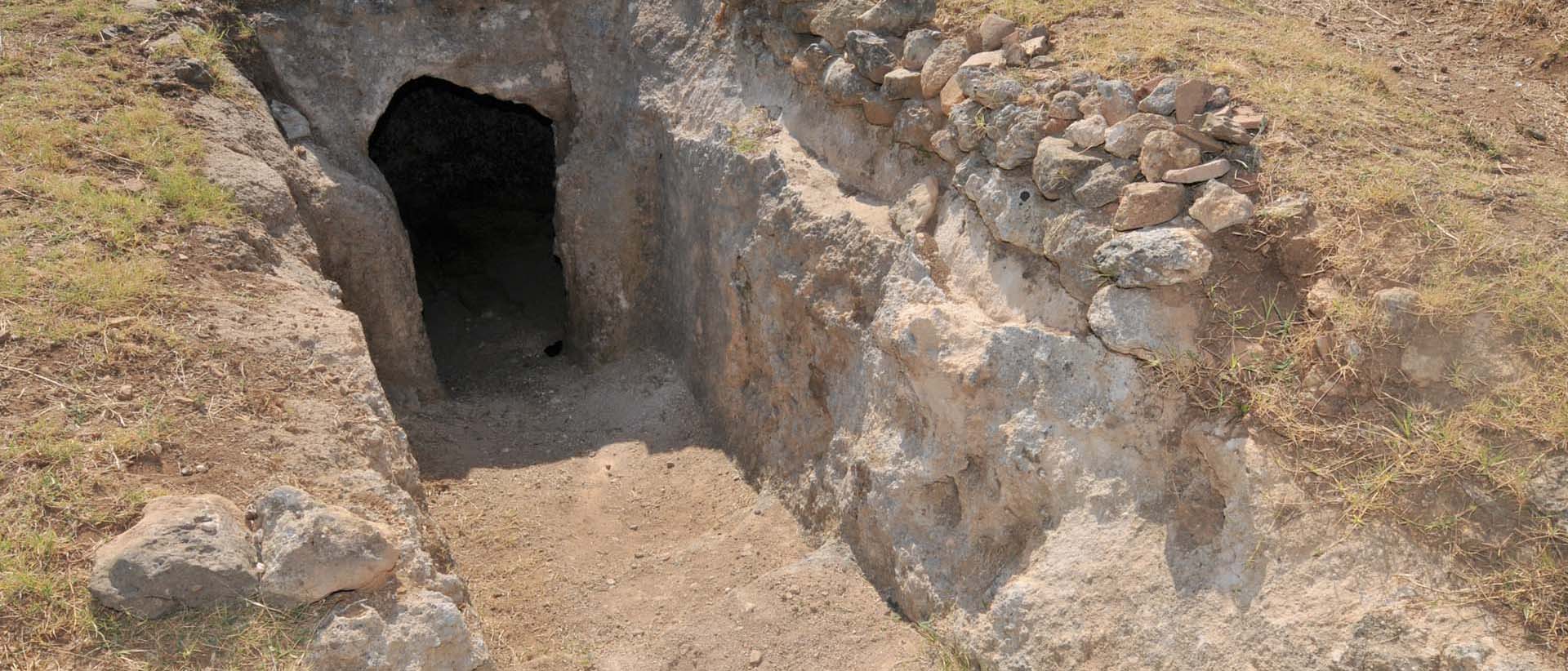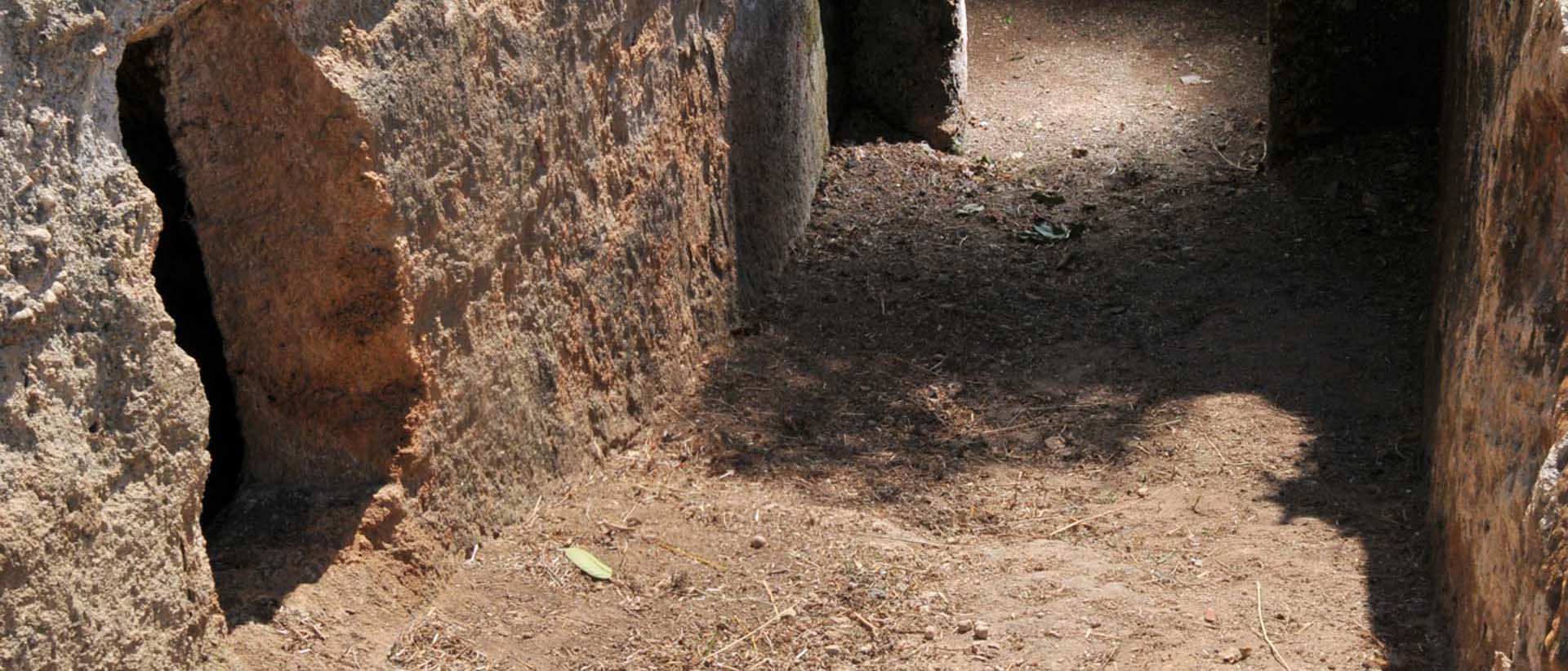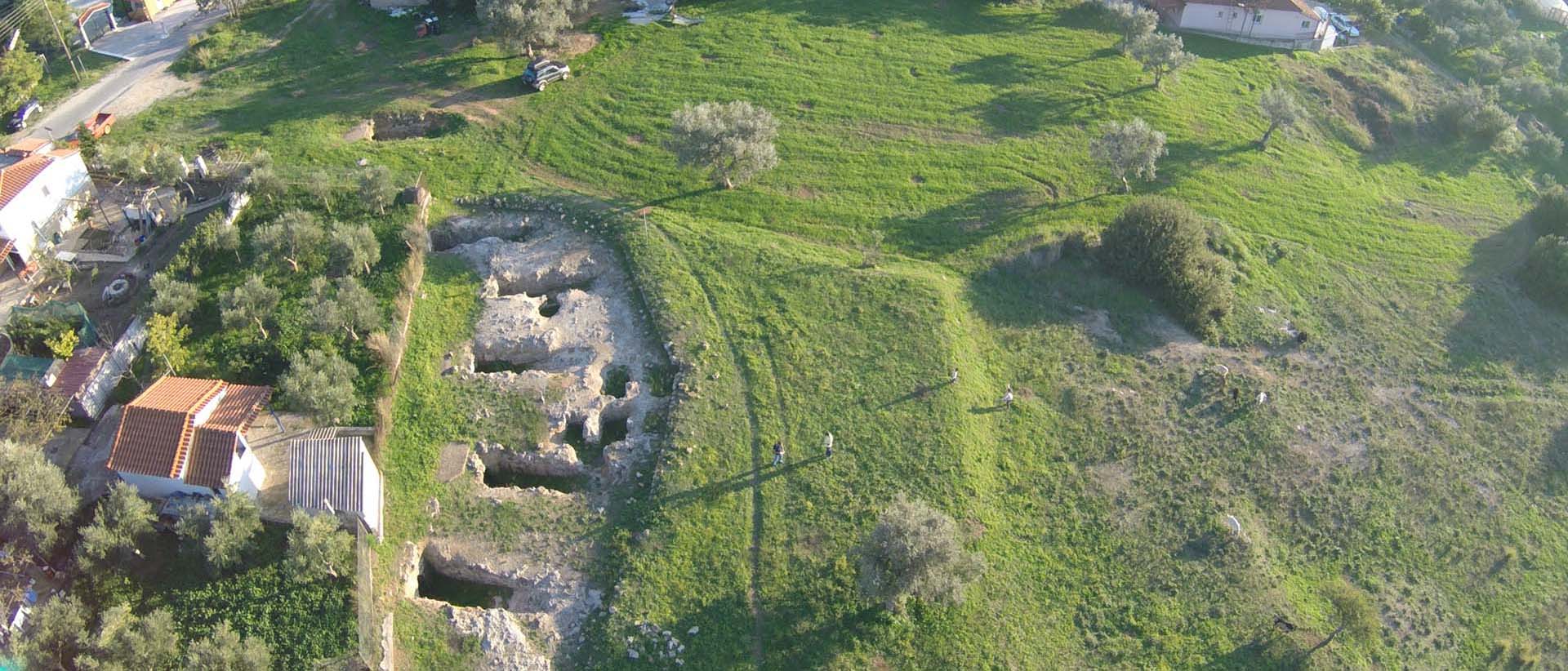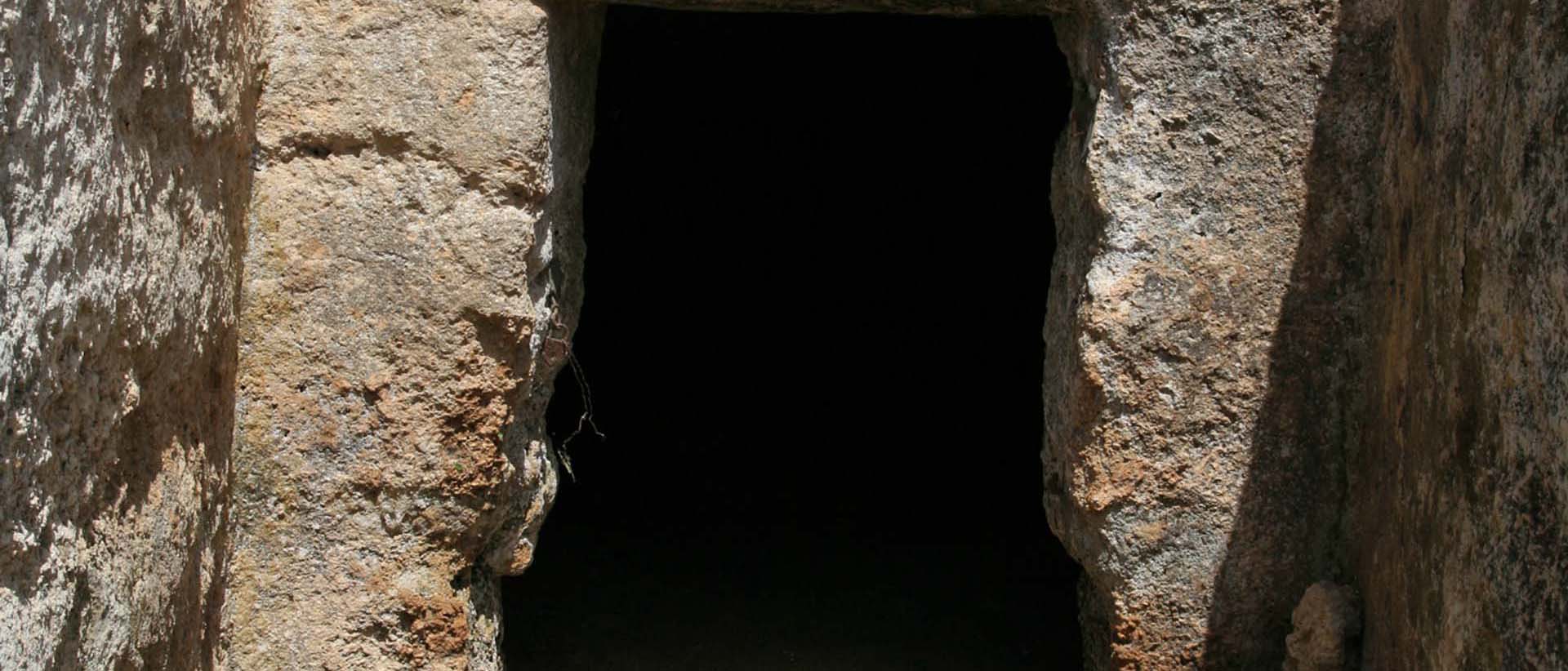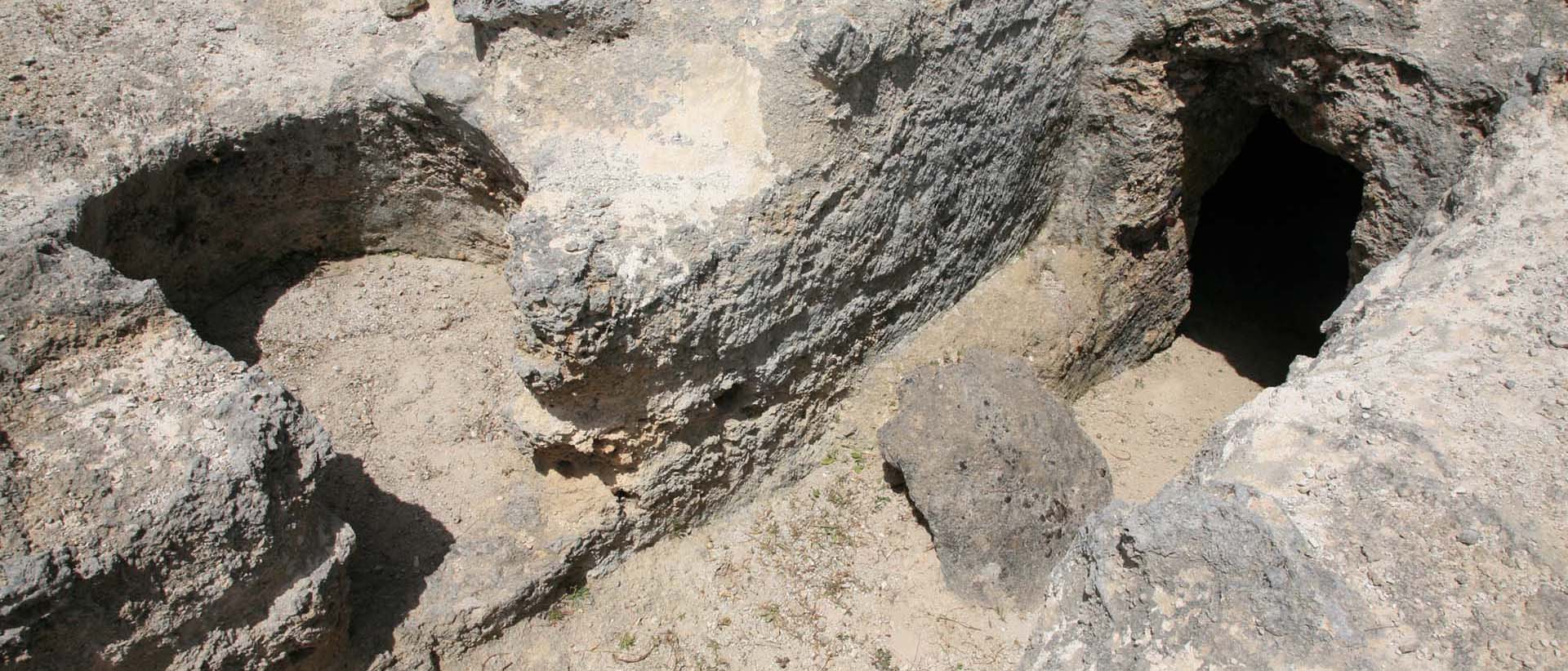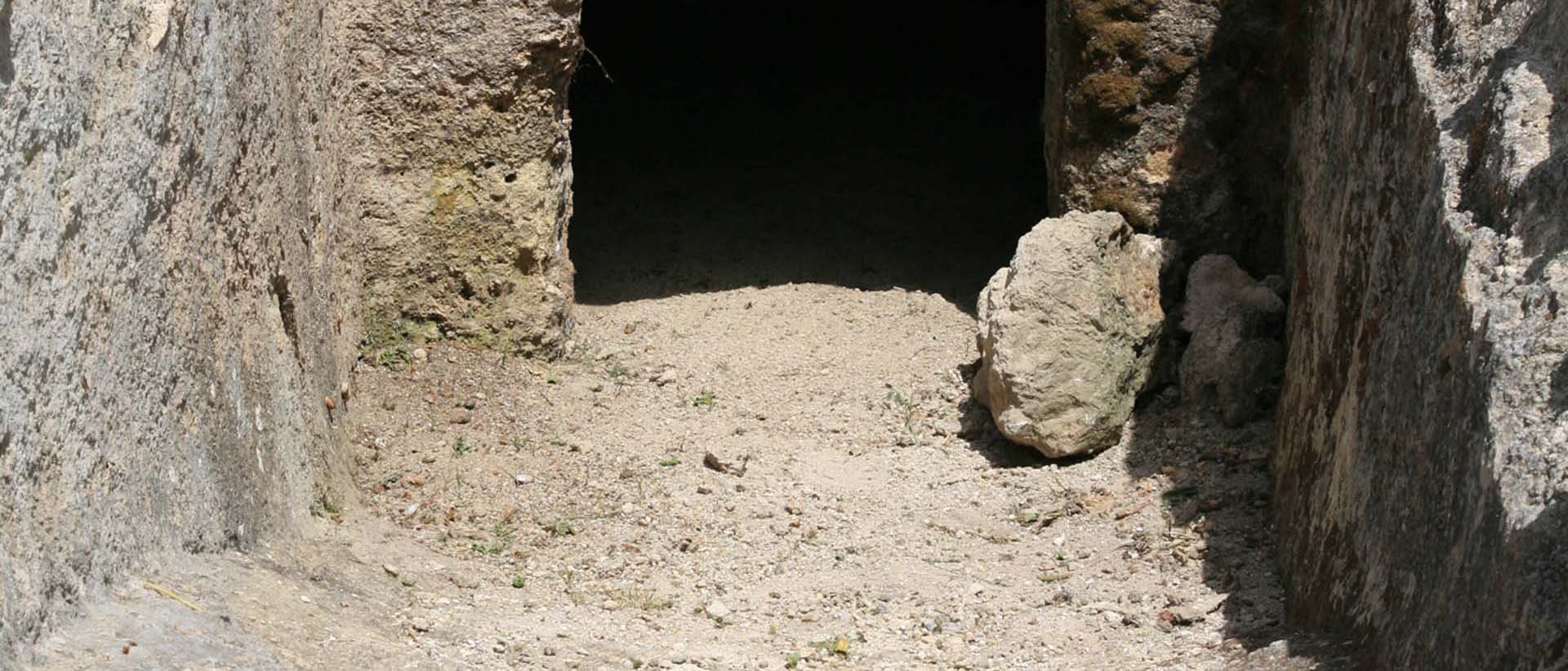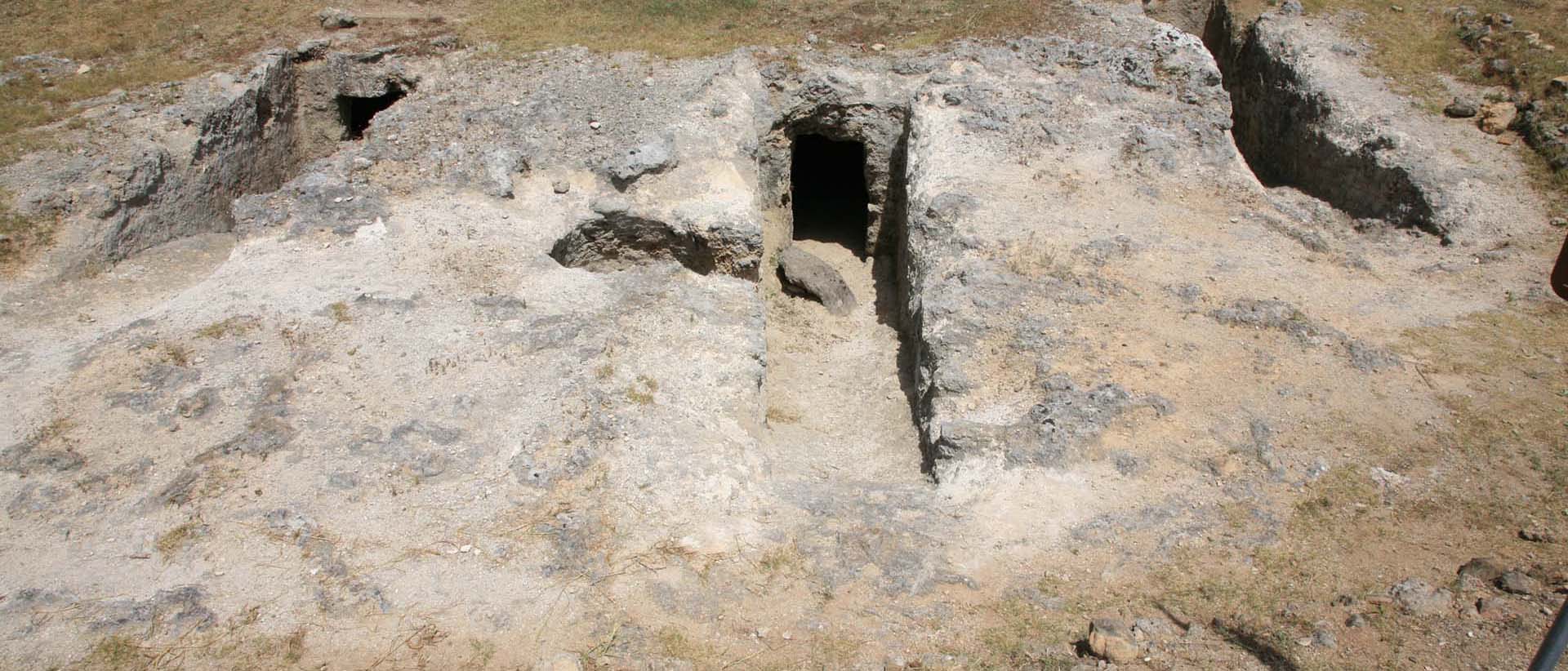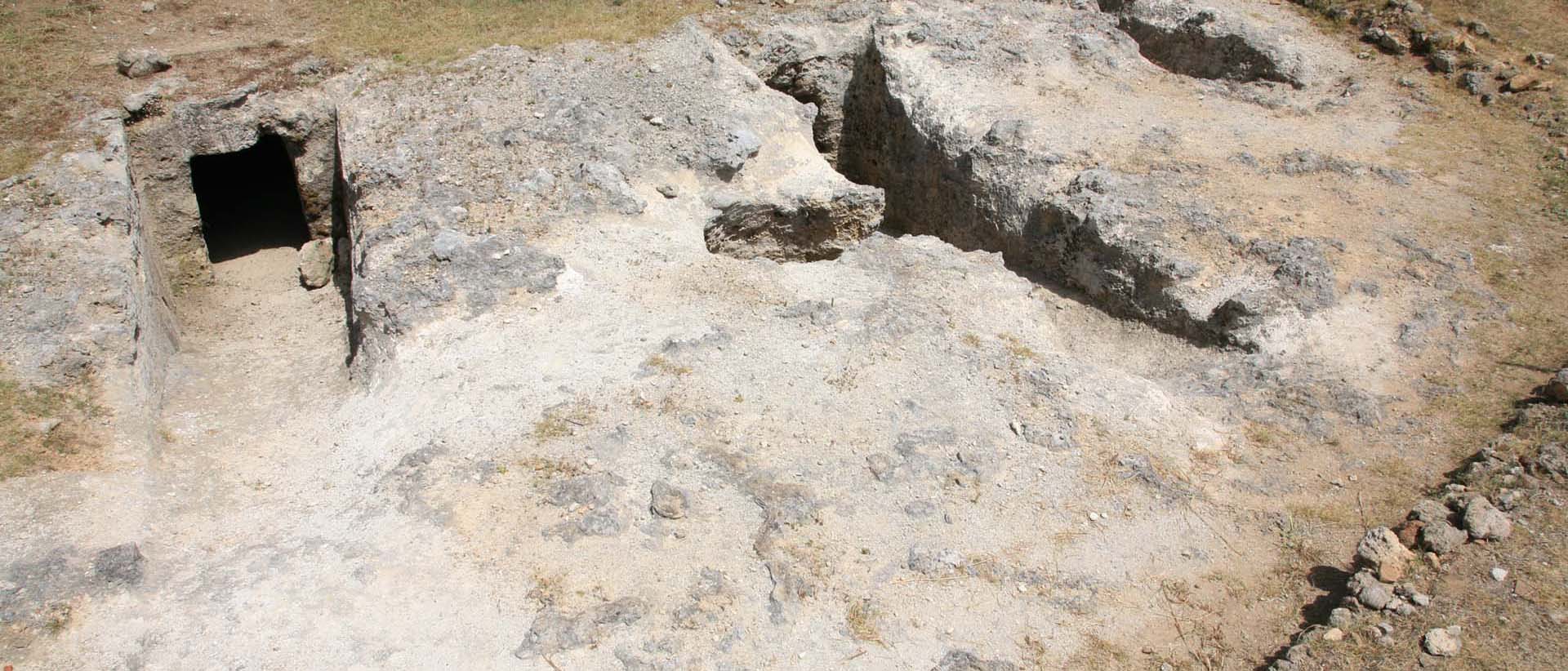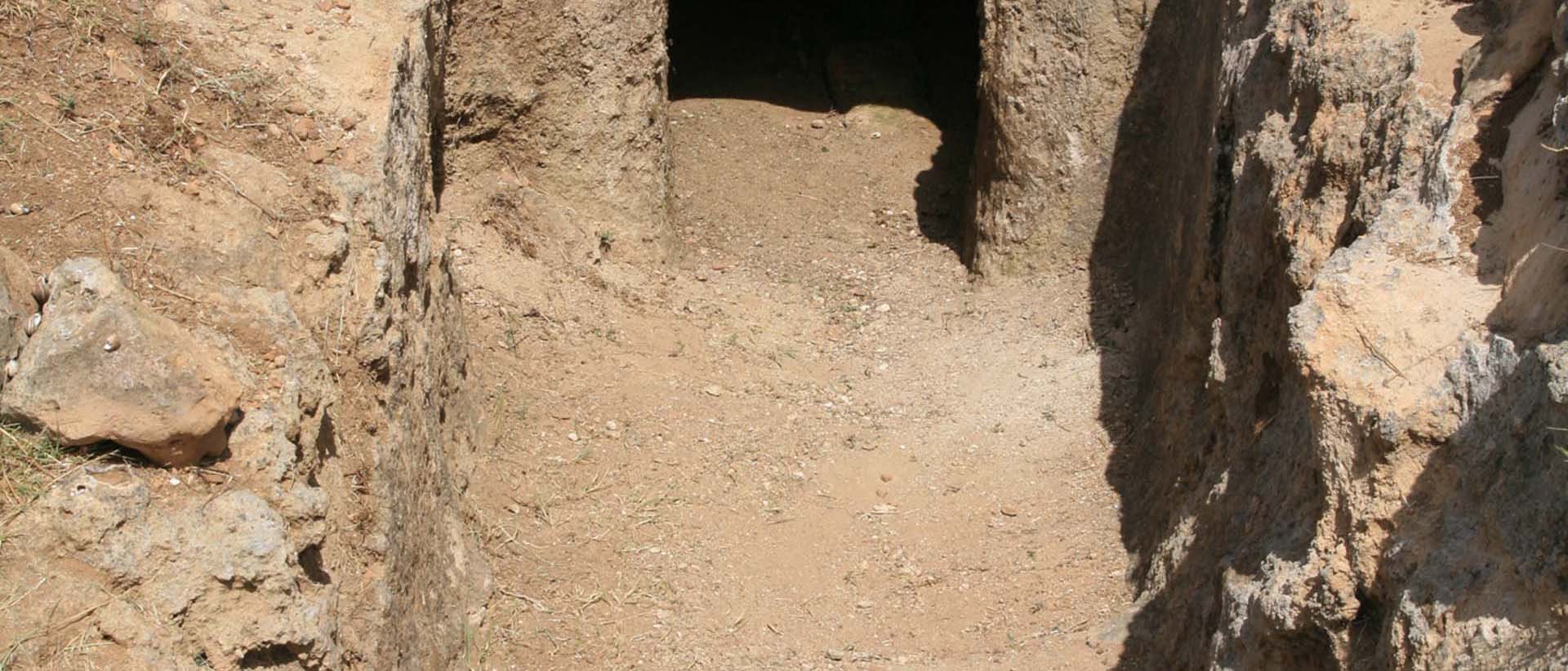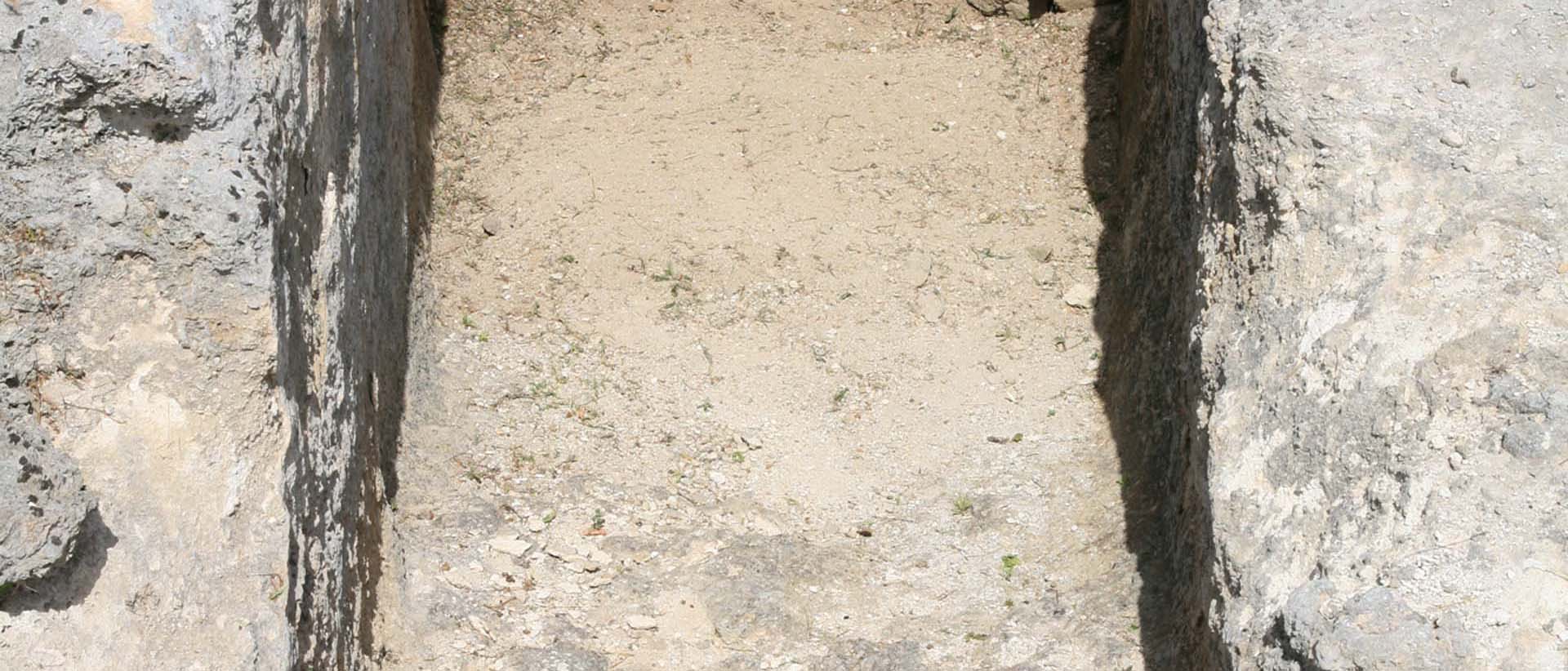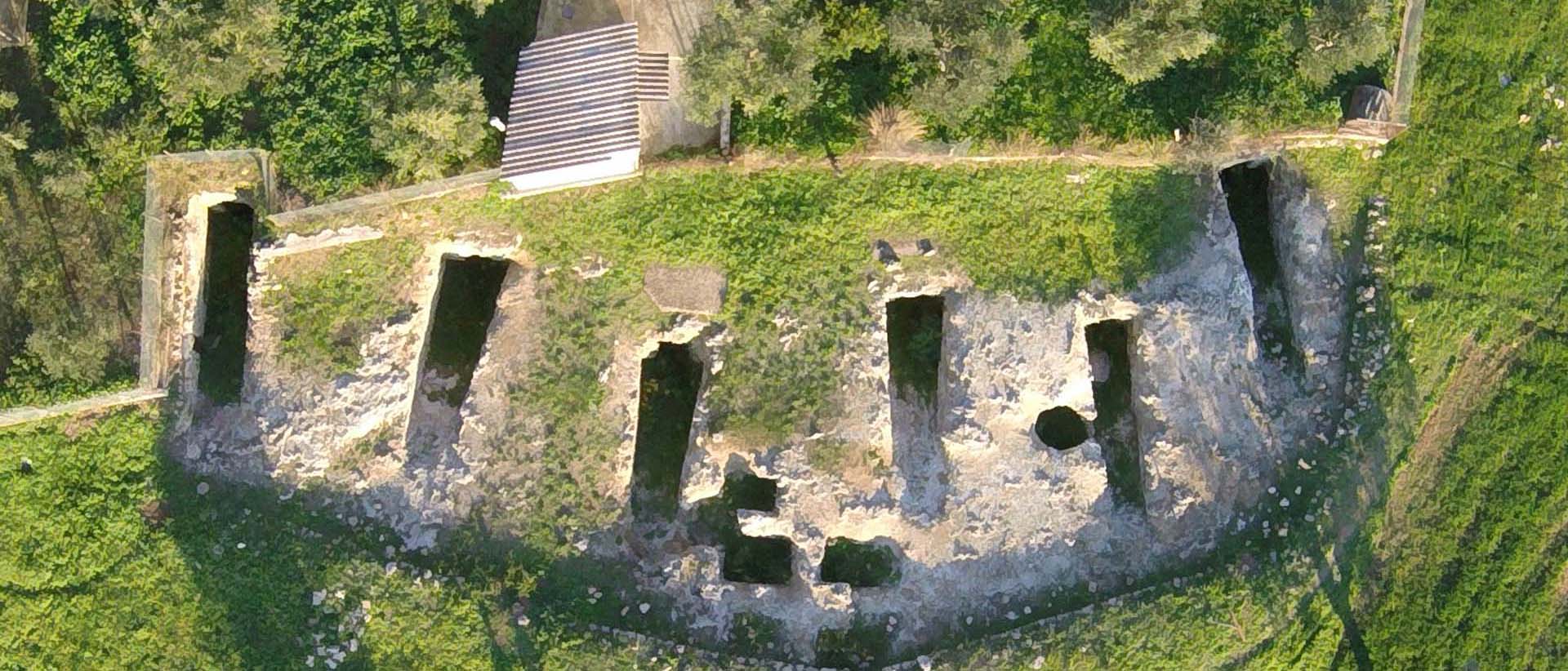
Mycenaean cemetery in Volimidia, Chora

In Volimidia, about 4 km northeast of the Palace of Nestor and very close to Chora, lies the extensive cemetery of Mycenaean chamber tombs, mostly excavated by Spyridon Marinatos in the 1950s and 1960s. The area appears to have been inhabited as early as the Middle Helladic period (17th century BC), while the cemetery was in use throughout the Late Bronze Age (16th-12th century BC). The 33 chamber tombs that have been investigated are dug into the soft rock, organised in clusters and have a dromos (passageway), usually a circular burial chamber with a vaulted roof, while some have side chambers and niches.
The finds include a large number of ceramic vessels but also figurines, jewellery, weapons, tools and objects of everyday use. These artifacts relate to a more conservative population of farmers, herders and craftsmen who were under the direct control of the Palace at Eglianos. The settlement to which the cemetery belongs was identified either with the pa-ki-ja-ne, a Mycenaean centre of religious activity recorded on the Linear B tablets, or with Palaipylos mentioned in Strabo. In historical times, ancestor worship ceremonies were held in the tombs.

